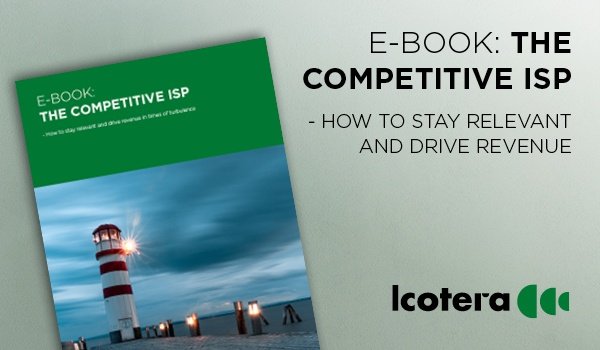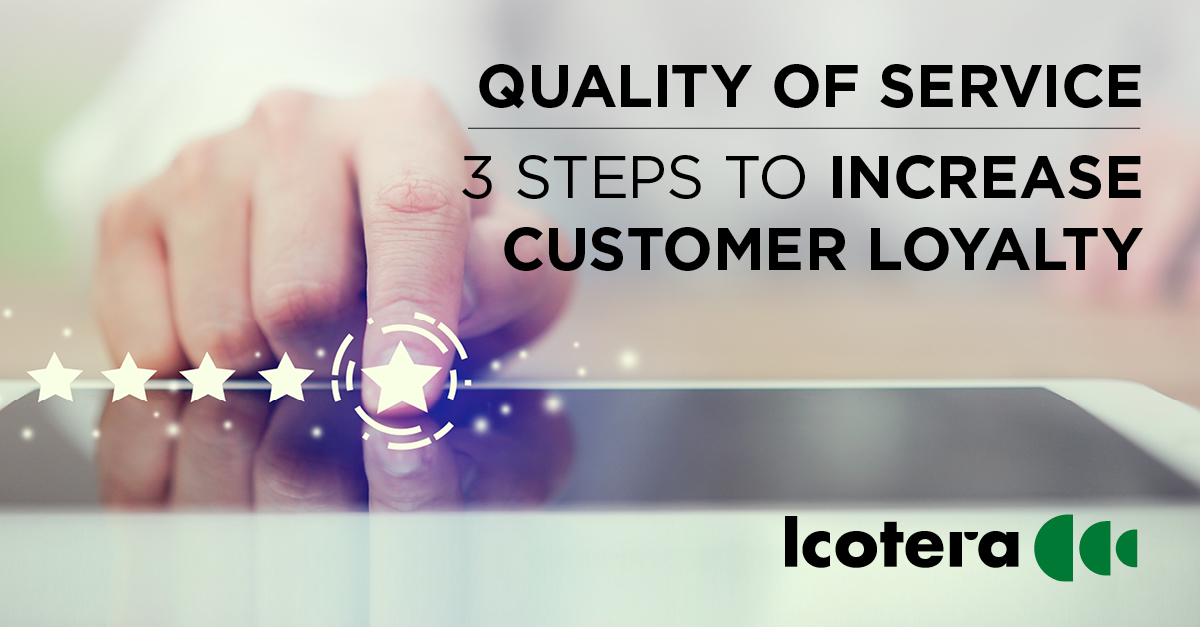These days, changing customer behavior means ISPs are shifting from triple-play to single-play providers of internet services. But how do you claim a unique position in a market that is characterized by fierce competition? The answer is simple: Increased quality of service will help attract and retain customers.
Less than a decade ago, it was common for ISPs to offer several services to their customers: Landline telephony, regular TV, and internet.
Those days are gone. Landlines are history, and while some people are still watching flow TV, streaming and on-demand TV is increasing heavily. In other words, the internet has become the primary value proposition, and end-users have high expectations.

“In the end, the ones who deliver the highest quality of service to their clients will earn their loyalty. And loyal customers stay”
–Erik Søe-Pedersen, Chief Commercial Officer, Icotera
Fighting for customer loyalty
While the internet has become the primary service, fiber deployment is increasing. Today, fiber plays a crucial role, and many fiber operators are either forced by regulations - or they simply identify market opportunities - to open their fiber net, thereby making their own business subject to competition. Increased competition should be welcomed with open arms, according to Erik Søe-Pedersen, Chief Commercial Officer (CCO), at Icotera:
– As a rule of thumb, the higher the level of competition, the more demand there is for a product or a service. But the million-dollar question is of course: How do you attract and retain customers in a market with fierce competition and where new ISPs are luring customers with low prices? My answer is clear: By offering the best possible Wi-Fi experience at a competitive price.
However, as simple as it may sound, this is no walk in the park – especially now that development has reduced the ISP to a single-play, internet subscription provider.
– Experience shows that customer loyalty towards a single player is lower than if a customer buys more services from the same supplier. So undoubtedly, ISPs are facing huge challenges. In the end, the ones who deliver the highest quality of service to their clients will earn their loyalty. And loyal customers stay, Erik Søe-Pedersen says.
3 steps to increase loyalty
There is no doubt that poor in-home Wi-Fi performance causes a lot of frustration, weakens loyalty and at worst drives customers away.
– Reducing customer churn by just 0.1 percent per month will save an ISP a lot of money. It’s expensive to attract a new customer, so invest in holding on to existing customers. This will pay back tenfold, Erik Søe-Pedersen points out.
The CCO stresses that the key lies in having an effective setup that ensures smooth and effective troubleshooting.
#1 Self-heal
Erik Søe-Pedersen predicts that in near future, more ISPs will be able to include self-heal-features in their Wi-Fi service.
– In-home performance is causing too many issues and frustrations. In the ideal world, your Wi-Fi system should have fixed an issue even before the end-customer encounters it, Erik Søe-Pedersen explains. He elaborates:
– As the name indicates, self-healing is all about the system reconfiguring itself, so that connection is regained when lost. In short, troubleshooting is done automatically. This is an area with an enormous potential, and even though there is still some way to go, I’m convinced that there is a huge competitive advantage to be gained here.
#2 Self-help
While self-heal features may be part of the solution, there will clearly always be issues that require human intervention. According to the CCO, this is where self-help comes in. Self-help, or self-support, is all about providing end-users with the best possibilities for supporting the system themselves.
Erik Søe-Pedersen provides an example: No two homes are the same and the way your router is placed in relation to your clients (TV, PC etc.) is all-important. Thus, the end-customer needs help to ensure an ideal setup.
According to Søe-Pedersen, the best solution would be to send out a technician, but he admits this is an expensive solution for the ISP. Instead, the system should provide the end-user with guidance to do it right.
– In the ideal world, if end-users have placed their router in a bad place, e.g. behind the water heater or in a closet, the system should be able to text the customer saying, “we can see that you have a unit that is having trouble connecting. Please try to fix it via the guide in the app or reach out to our support", Erik Søe-Pedersen explains.
#3 Support
Understandably, end-users get frustrated when they cannot manage to get the Wi-Fi to work the way they expect.
– ISPs must ensure that when an end-user reaches out to the help desk, the end-user is given the right help as quickly as possible. It doesn’t matter that the end-user must seek help, if this is quick and easy to find and as long as it is effective, Erik Søe-Pedersen points out.
Unfortunately, this is not the impression many end-users are left with when they call the help desk, unless you have an in-home monitoring system in place. And moving forward, having an in-home monitoring system in place is the base for providing proactive support.
– First-line supporters are in a difficult position when they have to solve issues based solely on input from end-users. Without data insight and real-time monitoring, it is difficult to know what’s going on and this is where troubleshooting becomes demanding for all parties, says Erik Søe-Pedersen.
It all comes down to the quality of the CPE
At the end of the day, what matters to end-users is a seamless in-home Wi-Fi experience.
– You can have as much data, self-help, and proactivity as you want, but you can never compensate for the lowest common denominator. It doesn’t do any good to go with a solution with a poor-quality router that is not able to deliver a smooth in-home experience. High-end customer premise equipment (CPE) is a prerequisite, if you want to offer best-in-class internet performance, Erik Søe-Pedersen ends.
![]()
Want to know more about how high-end routers can improve your quality of service and hence improve customer loyalty? Feel free to contact our Chief Commercial Officer (CCO) Erik Søe-Pedersen at esp@icotera.com
-----------------------------------------------------------------
Interested in HOW your ISP business can stay ahead?
In this e-book, we look into how choosing the right business strategy and using customer data to deliver a proactive customer experience are two ways that will help you build a strong business case. And much more... Download our new E-book: The competitive ISP here

